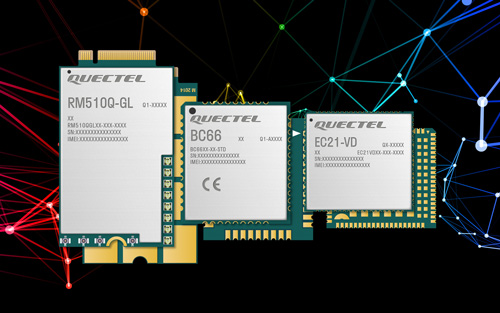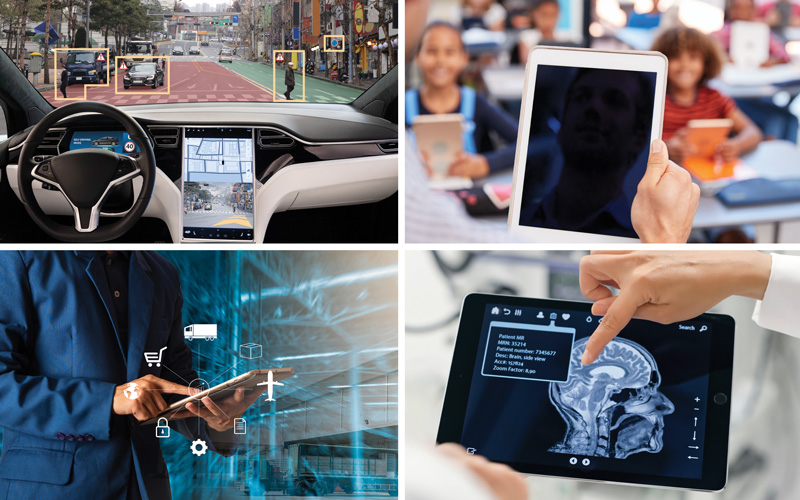Why LTE CAT-1, NB-IoT and 5G are leading the IoT adoption charge

There is now a bewildering array of connectivity options for IoT organizations looking to connect their devices and enable their applications. These traverse the dimensions of cost, coverage, capacity, power usage, security, regulatory compliance and availability and zeroing in on the optimal technology is a now familiar challenge in the market place. Neset Yalcinkaya, VP of Products, at Quectel Wireless Solutions, explains why popular cellular technologies are now leading the way because they readily meet more of the items on organizations’ checklists.
There are a series of new functionalities poised to enter the mainstream and these include highly-sensitive services such as assisted driving, which will ultimately lead to autonomous driving, and remote healthcare, which will enable life-saving specialist operations or emergency care to be delivered by surgeons from a distance. Trials are ongoing in many markets across the globe and will rely on newer network technologies such as 5G to provide the speeds and low latency such services demand.
In logistics, we will increasingly see complex supply chains rely on connectivity down to the individual container, pallet or parcel level. This will need ultra-low cost, near-disposable solutions powered by lower bandwidth technologies such as NB-IoT or other low power wide area networks (LPWAN). We also expect to see mid-range technologies enabling social initiatives such as connected devices for educating children. A technology such as LTE-M will be sufficient for this and this is the type of project that really enthuses Quectel as we can bring our expertise to bear to really enable new possibilities for society.
We foresee even greater adoption of the following network technologies as different applications access the most appropriate connectivity for their use cases:
LTE CAT-1
An increasing percentage of the IoT industry is looking for an all-in-one solution that provides excellent, reliable and secure coverage while also delivering cost advantages, optimal tariffs and global coverage that enables roaming and voice capabilities. LTE Category 1 (LTE Cat-1, or just CAT-1) brings together all of these attributes and this makes it an indispensable connectivity technology for IoT.
One size doesn’t necessarily fit all but many applications have similar requirements and CAT-1 attributes are proving popular. Analyst Firm, Berg Insight, for example, has estimated that 28 million CAT-1 modules were sold in 2018 and has forecast that module shipments in 2020 will exceed 55 million units worldwide. ABI Research forecasts that shipments will continue to grow and will exceed 212 million pieces in 2023.
NB-IoT
Narrowband-IoT is a standards-based low power wide area (LPWA) technology developed to enable a wide range of new IoT devices and services. NB-IoT significantly improves the power consumption of user devices, system capacity and spectrum efficiency, especially for indoor coverage. Battery life of more than ten years is a feature that makes this technology particularly attractive.
The extended coverage and ultra-low device complexity of NB-IoT and the fact that initial cost of the NB-IoT modules is expected to be comparable to GSM/GPRS are further advantages. In addition, the underlying technology is however much simpler than GSM or GPRS and NB-IoT cost is expected to decrease rapidly as demand increases, opening up new market opportunities.
5G
The consumer market hype affects IoT market realism but 5G IoT deployments are happening. The GSA’s Market Snapshot of August 2020 reports that there are now 92 commercial 5G networks operating in 38 countries demonstrating that there is now a large significant base of markets that have 5G coverage available for industries to exploit. In addition, more are set to roll-out 5G shortly, with 392 operators in 126 countries having announced they are investing in 5G at the end of July 2020.
Many established IoT applications don’t have requirements for the capabilities of 5G or simply don’t have business cases that can justify its cost. For many IoT applications, the bandwidth offered by low power wide area networks (LPWAN), 3G and 4G/LTE is abundantly sufficient for their data transmission needs. However, with 2G cellular networks being retired and the substitution of 2G with NB-IoT becoming massive around the globe, the opportunity for 5G IoT is starting to crystallize. 5G’s core benefits of high speed, low latency and connection density are well-known and, in essence, enable a paradigm shift in performance compared to alternatives.

Understand your project’s needs
Regardless of your requirements, Quectel takes a listening approach. We want to fully understand what our customers need, gathering all their requirements so we can choose the best module for their deployment. Typically this is based on the complex equation outlined earlier in which we balance needs for connectivity performance with power consumption, cost, form factor, deployment location, regulation and security requirements.
For instance, a customer might want to develop a lower cost device for global deployment. That immediately precludes selection of a 5G module on the grounds that there is no global availability and the module cost is too high for lower value use cases. We’ll then look at the communications capacity they require and identify, in the cellular market whether LTE CAT-1 or NB-IoT can meet their needs. It might be either that is most appropriate, with CAT-1 providing greater throughput and near-ubiquitous global coverage or NB-IoT being more cost effective.
Our focus on communication modules for IoT means we have been able to provide modules for new technologies like NB-IoT and 5G at the earliest stages of these technologies’ development curves. This rapid pace of development means customers can be the first to design and test the new technologies using our modules and thereby identify the optimal communications technology for their deployment and business case.
Our goal is to help our customers scale-up with the modules we provide. We plan for our customers’ success from the very beginning and this means customers can have confidence in us and choose one module and one technology in the knowledge that they have a compatible design that will drive them into the future.

